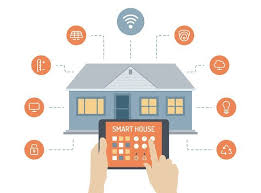Smart Home Insurance
Article Synopsis :
Digitisation now touches most Americans in some shape or form.
Yet the way most US consumers purchases homeowner insurance has changed little in decades. Whether via an agent or direct, based on personal recommendation or research online, a purchase is made, but consumers can rarely distinguish products or the companies offering them.
Old models, but higher expectations
However, consumers are increasingly using online to search for products and have an expectation that this will be a simple, painless and customised experience. Legacy carriers are nowhere near offering service to these standards, and so digital transformation is imperative for their success in this new landscape.
There is a difference between renters and homeowners in how they wish to purchase insurance. Renters in the US buy a large proportion of policies through digital channels. This is not the case for homeowner insurance which shows agents and brokers are the primary channels, although this is beginning to change.
Developing smart home pilots
American Family has run small scale pilots since 2014 that offer technology products to employees to learn how effectively these devices meet customer expectations, mitigate risks, and enhance users’ lives.
These devices include:
- light bulbs;
- security cameras;
- smoke and carbon monoxide detectors;
- thermostats;
- video-enabled doorbells;
- water flow meters;
- water leak detection sensors;
- water shutoff valves
Putting the data to work
In 2015, American Family launched a pilot that provided customers with certain smart home products. Those participating had to agree to share limited data about their devices – when they were on, fully operational and communicating through wi-fi.
A clear data privacy policy allowed American Family staff to send out replacement batteries when a low battery alert showed on a smoke alarm.
The programme showed that customers expect technology to work from when it is first used. When seeking technical support, the users would approach the insurer, not the manufacturer. Many customers consider troubleshooting equipment as an unacceptable inconvenience.
However, automatically sending out batteries saved the insured families from a chore and ensured the property remained protected.
Engagement, empowerment, and risk reduction
The research showed that consumers seek devices that solve real-life problems or inconveniences. Customers also engage more frequently with smart home mobile apps which deliver real value. It was also discovered that customers like tools that help them:
- understand the risks they are exposed to;
- monitor the progression of those risks; and
- receive insight to mitigate damages.
These devices are promoting safer behaviour by enabling greater awareness, whether or not the residence is occupied. The opportunities to encourage safer behaviour is increased when customers share data with insurance companies. These safer behaviours may also be rewarded by insurers.
This paper says security and safety services built on information derived from smart devices will help to prevent or mitigate certain losses. However, there are some essential components to ensure this will work. They include:
- secure, trusted relationships;
- broad distribution of secure and reliable smart devices in houses;
- large quantities of data streaming from the devices;
- algorithms that derive insights from these data; and
- capabilities to deliver effective actions in the field.
Success will only follow change
This requires insurers to become customer-centric, and must deploy technologies to improve customer experiences. It has been proven that smart home technology can help engagement with customers and allow insurers to earn loyalty and differentiate themselves from their competitors.
Research by the IoT Insurance Observatory showed that US consumers have a positive attitude towards smart home insurance. More than half (54%) of US homeowners and 40% of renters surveyed said they would buy an insurance contract based on smart devices and would pay for these services if they received some incentives.
By collecting smart home data, the insurer can assess and manage certain risks in the home and deliver a superior value proposition.
There are five key “value creation levers” identified by the paper:
- services;
- loss control;
- risk selection;
- behavioral change;
- risk-based pricing.
But ultimately, what the paper summarises as “the 4 Ps” – people, processes, privacy, and partnerships – must be combined in order to provide new opportunities for insurers and ecosystem players.
Link to Full Article:: click here
Digital Insurer's Comments
Fascinating insight here into how the internet of things (IoT) is gaining traction and influencing the US homeowner insurance market.Though smart homes are becoming more popular in many economies, this paper shows a clear demand from those who have experienced smart home insurance through a pilot scheme.
It proves that building tailored, simple products that save consumers time and effort are appealing and that considerable numbers will pay for them.
Link to Source:: click here


























































Comments